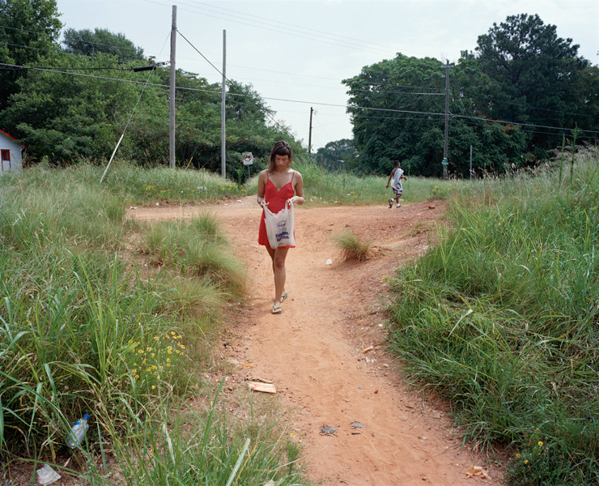
On Wednesday, March 11, photographer and professor Curran Hatleberg presented his work to students and faculty in the Lecture Center to entice the beauty of the unknown in photography.
Hatleberg, 33, originally from Washington D.C., currently resides in Brooklyn, N.Y. He teaches photography at the International Center of Photography and Norwalk Community College and road trips and photographs America while on breaks.
His presentation entailed anecdotes of the journey he took to stand where he is today while presenting and explaining the stories behind many of his photographs.
After flunking out of college, he was unsure of what direction he would take in life. He knew he would never sit in an office day after day as his parents did, so he took up art.
He went back to school and after earning a degree and he grew to resent and hate painting that confined him to the studio for so many hours during his undergraduate years.
Next came photography.
“I was liberated from the studio burden as a photographer,” Hatleberg said.
Even though he now had his degree, Hatleberg was still uncertain about what to do next. So he packed up his car with the goal of eventually ending up in Maryland.
“Risk without clarity or control fueled my practice,” he said.
Hatleberg was on a road trip that had no end. He photographed what he saw while on the road. He did not constrict himself in terms of region because of intuition and the desire to see the unknown.
He said that he would visit sites he had previously romanticized from books or movies in his head. If they were not as he imagined, he simply packed up and moved on. On these trips he was looking for something that was missing, but he didn’t know what it was. He felt he was on the verge of something very important.
While driving through different cities and towns, he developed a deep love for and fascination with America. He was interested in America not geographically, but psychologically. His photographs are a contradictory balancing act, for example being beautifully sad.
Hatleberg described his photographs as “unearthed realities.” He said that most pictures are of strangers based on chance.
“Strangers help us un-key what is meaningful,” he said.
Being on the road for so long, however is not always easy for Hatleberg. He said it is easy to become depleted and wounded working on the road.
“It’s the most depressing, hardcore thing to do because you’re alone. I never know when the next picture will come,” Hatleberg said.
With a mere smile, he said he has intense pleasure not knowing what a picture will be. He talked about the hospitality that strangers have offered him, from sleeping on someone’s couch for a week and never seeing them again to stories people have shared with him.
Hatleberg wrapped up his presentation with what he hopes to accomplish with his photographs.
He wants to shift the conversation of his photographs from themes of landscapes to the social context.
Raechel Manzler, a second-year visual arts major, found Hatleberg’s work very raw.
“He has a snapshot quality to his photos that revealed a realness about the world,” Manzler said. “He also mentioned that he doesn’t like to do a lot of work in Photoshop which I thought was very cool because today people have become focused on manipulating images to make them up to society’s standards.”
Hatleberg said he likes to use a visual form that makes it hard for a viewer to resolve the picture. His photographs contain a visual stability where all the components are vying for the audience’s attention but are equally important, so the viewers eye keeps moving around the picture.
According to Hatleberg, he really wants his pictures to show not what is happening, but rather suggest what might be happening. “I like when a photograph implies a narrative but ultimately withholds it,” he said.
Unlike journalism, which gives up the who, what, where, when and why, Hatleberg is more interested in asking questions. He enjoys the open-ended quality of a picture.
“The ambiguity is amazing because it welcomes this sort of greater interpretation and invention from the viewer,” he said.
Hatleberg does not seek to provide his audience with facts. Instead, he uses his photography to capture a single moment and leave the rest unknown.
